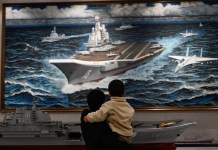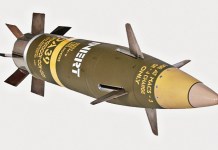Chinese government-controlled media continuously tells the world about China’s fast-emerging aircraft industry. However, great powers do not steal designs or unauthorisedly copy them, flouting all intellectual property rights and norms evolved by the fair and responsible world.
Practically, most aircraft in the People’s Liberation Army Air Force (PLAAF) are either foreign-made or unauthorized reverse-engineered copies. Stealing foreign military technology amounts to a strategic weakness. In this manner, China skipped expensive and time-consuming R&D.
It is time to have a look at their aircraft design.
Initial Aircraft Copies
The Korean War brought Soviet assistance to the indigenous aircraft industry in China. The Shenyang Aircraft Corporation built the two-seat MiG-15UTI trainer as the JJ-2 and, during the war, manufactured various components to maintain the Soviet-built fighters.
By 1956, the People’s Republic was assembling copies of MiG-15s and, eight years later, was producing both the Shenyang J-5 (MiG-17) and the Shenyang J-6 (MiG-19) under license.
The 1960s were a difficult time for the PLAAF. The withdrawal of Soviet aid due to the Sino-Soviet split and the prioritization of the missile and nuclear weapons programs crippled the industry, which markedly declined through 1963.
A recovery began around 1965 as J-2s, J-5s, and some J-6s were provided to North Vietnam during the Vietnam War. Development of the Shenyang J-8, China’s first indigenous fighter, was also initiated during the 1960s.
Shenyang F-7B/Chengdu J-7 (Copy of MiG 21)
In the 1950s and early 1960s, the Soviet Union shared most of its conventional weapons technology with China. The MiG 21 was a contender. However, the Sino-Soviet split abruptly ended the initial cooperation, and by September 1, 1960, the Soviets withdrew their advisers, resulting in the project being stopped.
Later, Soviet Premier Khrushchev unexpectedly wrote to Mao Zedong in February 1962, offering to transfer MiG-21 technology. The Chinese viewed this offer as a Soviet gesture to make peace but were suspicious.
A delegation headed by the PLAAF commander-in-chief, himself a Soviet military academy graduate, went to Moscow. The technology transfer deal was signed. Several MiG-21s were sent to China and flown by Soviet pilots.
China also received some MiG-21Fs in kits, along with parts and technical documents. However, the Chinese discovered at the Shenyang aircraft factory that the Soviets’ technical documents were incomplete and that some of the parts could not be used.
China then disassembled a few MiG 21s and began reverse-engineering the aircraft for local production. They claim to have found and solved 249 major problems and reproduced eight major technical documents that were not provided by the Soviet Union.
The F-7s were the very last production MiG-21s, and about 2,400 were manufactured, some as recently as 2013.
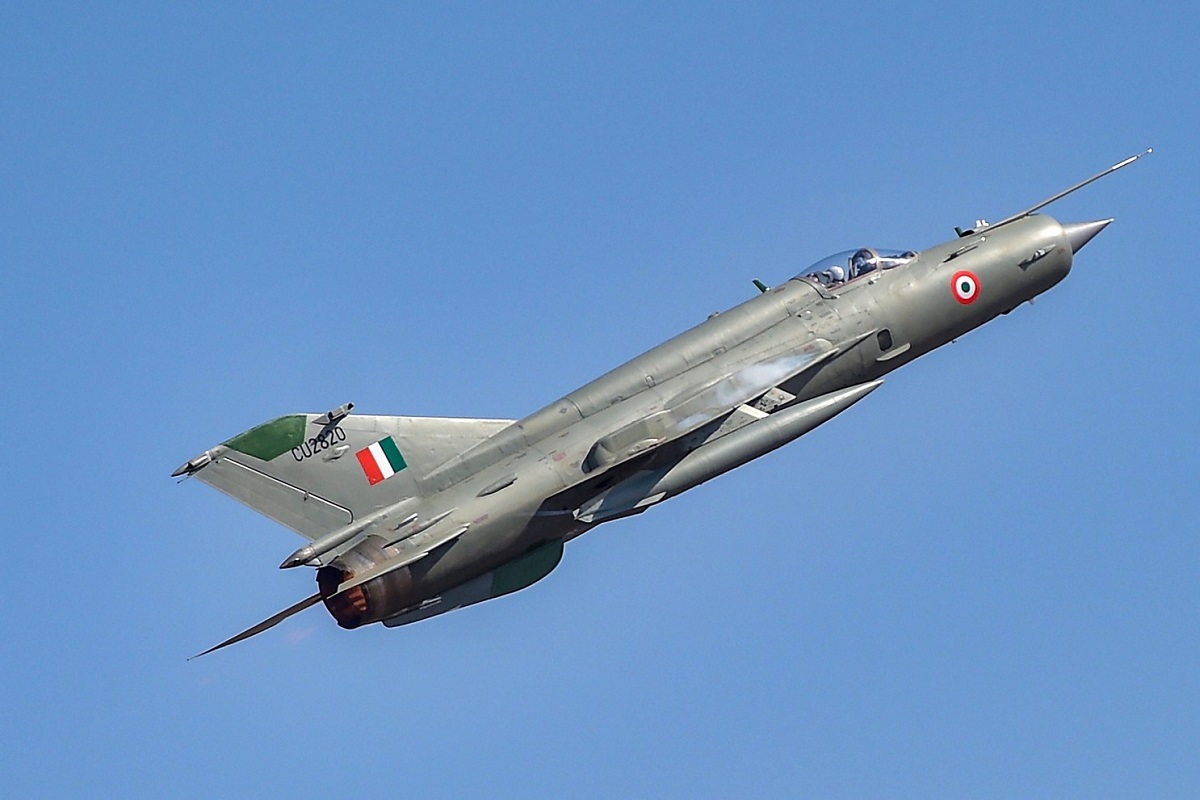
J-8 (Copy of MiG 21 & Su-15)
The Chinese effort to develop their own all-weather interceptor began in full in 1964, and this produced the first Chinese-designed and built jet fighter to combat new, high-altitude threats, including the Lockheed U-2 spy plane.
In 1964, the PLAAF asked for a fighter/interceptor to counter bombers and spy planes as the newly introduced Chengdu J-7, which they felt was incapable of doing so.
The prototype took its maiden flight in 1969. Despite the mid-1960s origins of the J-8, due to the political turmoil of the Cultural Revolution, the J-8 was not produced until 1979 and entered service in 1980.
Its basic configuration resembles an enlargement of the delta-winged J-7. It had two Liyang (LMC) Wopen-7A turbojet engines and could fly to Mach 2.2. It was clearly derived from the MiG 21 design. The subsequent variants, J-8II, had the side air intake copied from the MiG 23 or American F-4 Phantom.
In fact, it was more a copy of the Sukhoi Su-15. At one point, nearly 300 were in service.
‘Raptor Salad’ For Lunch! US F-22 Raptor Outgunned, Outmaneuvered By German Eurofighter Typhoon?
Chengdu J-10 (Copy Of Israeli Lavi & F-16)
In the 1980s, the U.S. partnered with Israel to develop a new combat aircraft based on the General Dynamics F-16. But as costs rose, the U.S. pulled out of the deal, leaving Israel’s “Lavi” fighter unfinished.
Israel sold the Lavi’s development plans to China, granting them unprecedented access to technologies first developed for the F-16. The J-10 shared more than a striking visual resemblance with the F-16.
The Chengdu J-10, also known as “Vigorous Dragon,” is a single-engine, lightweight multirole fighter aircraft capable of all-weather operation. It is configured with a delta wing and canard design. It has fly-by-wire controls.
The program was authorized by Deng Xiaoping in the 1980s. Work started several years later in January 1988 as a response to the Mikoyan MiG 29 and Sukhoi Su-27 flying in USSR and the American F-15 and F-16.
The chief designer was the same as for J-7III. The aircraft was initially designed as a specialized fighter but later became a multi-role aircraft. In 2006, the Russian Siberian Aeronautical Research Institute (SibNIA) confirmed its participation in the J-10 program.
SibNIA engineers also believed the J-10 was “more or less a version” of the IAI Lavi, incorporating “a melting pot of foreign technology and acquired design methods.”
The J-10 was officially unveiled in January 2007. The first prototype, “J-10 01,” was reportedly rolled out in November 1997 and first flown on 23 March 1998. The aircraft series was produced in 2002 and was formally introduced in PLAAF service in 2006.

Over 700 have been built to date. The technology sourced through Israel allowed China to advance significantly over the 1960s-era fighters they were fielding at the time. This would not be the last Chinese fighter to incorporate elements of the F-16, but it’s the most direct.
J-10C is an upgraded version of J-10B. It is equipped with an Indigenous Active electronically scanned array (AESA) fire-control radar, the infrared-homing PL-10, and the new long-range PL-15 air-to-air missile (AAM).
JC-10CE is the single-seat multi-role fighter jet, the export version of the J-10. J-10B TVC Demonstrator is a prototype fighter based on J-10B that is equipped with a WS-10B thrust-vectoring control engine. Pakistan Air Force (PAF) is the only foreign customer that has acquired 36 J-10CE (20 delivered, 16 on order).
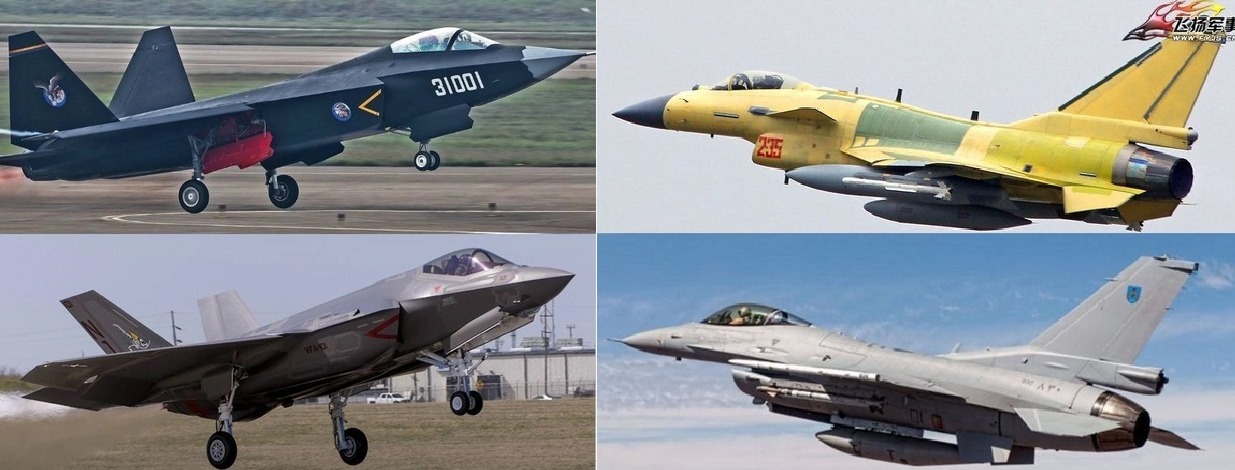
Shenyang J-11/16 (Copy Of Sukhoi Su-27)
In the 1970s, the Shenyang aircraft factory proposed a newly designed light fighter powered by the British Rolls-Royce Spey 512 engine. It would have better maneuverability than the MiG 19 and a better climb rate than the MiG-21.
The J-11 was finally born in 1998 as a Chinese version of the Soviet-designed Sukhoi Su-27 SK air superiority fighter after China secured a $2.5 billion production agreement that licensed China to build 200 Su-27SK aircraft using Russian-supplied kits.
Under the agreement, these aircraft would be outfitted with Russian avionics, radars, and engines. However, in 2004, Russian media reported that Shenyang’s co-production of the basic J-11 was halted after around 100 models were built.
The PLAAF later revealed a mock-up of an upgraded multi-role version of the J-11 in mid-2002. The Indigenous J-11B variant incorporated various Chinese material modifications and upgrades to the airframe with improved manufacturing methods. It also included domestic Chinese technologies such as radar, avionics suites, and weaponry, including anti-ship and PL-12 air-to-air missiles, presumably for the role of a maritime strike aircraft.
The alleged reason for the sudden stop in the J-11’s production line was that it could no longer satisfy the PLAAF’s requirements due to elements such as the obsolete avionics and radar, which were structured for aerial missions.
In 2002, Russian media reported that the Chinese were looking into replacing Russian-made J-11/Su-27SK components with domestic, Chinese-made parts.
Specifically, to replace the Russian-made NIIP N001 radar with a Chinese-made fire control radar based on the Type 147X/KLJ-X family, the AL-31F engine with WS-10A, and Russian R-77 AAM’s with Chinese-made PL-9 and PL-12 AAM’s.
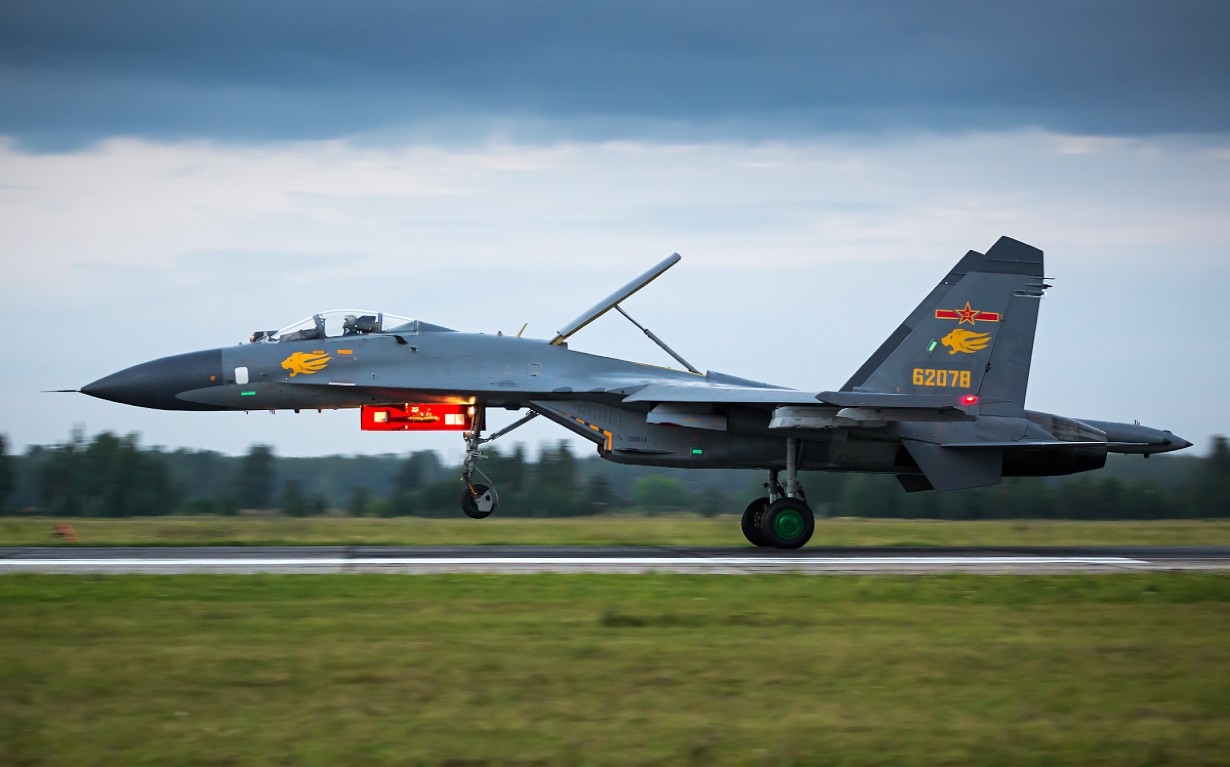
One J-11 was photographed in 2002 with an AL-31F and a WS-10A engine installed for testing. However, it was not until 2007 that the Chinese government finally revealed information on the domestic J-11: the J-11 used to test WS-10 was designated as J-11WS.
State television station CCTV 7 aired J-11B footage in mid-2007, officially confirming the existence of J-11 with domestic components.
At the Zhuhai 2002 air show, a photo was released allegedly depicting a J-11 modified for flight testing of a single WS-10 turbofan. Andrei Chang, a military specialist in China, reported that one J-11A was outfitted with the indigenously produced WS-10A turbofan engine.
However, Russian media reports also indicated that China still intends to upgrade the current J-11 fleet’s engines with either Saturn-Lyulka or Salyut power plants. Engines under consideration included the Saturn AL-31-117S (a development of the Lyulka AL-31F planned for the Indian Su-30 MKI).
Serial manufacturing of the WS-10 and integration with the J-11 proved to be more difficult than expected. As a result, even though several related prototypes had been tested and at least one regiment converted to the Taihang-powered J-11B version in 2007, these aircraft were later grounded for an extended period due to poor operational reliability.
A report in the Washington Times suggested that the Chinese engines lasted 30 hours before they needed servicing, compared to 400 hours for the Russian versions. Defects were traced back to the engine manufacturer, which employed substandard manufacturing and quality control procedures.
Several subsequent batches temporarily reverted to the original Russian AL-31F turbofans. By the end of 2009, the engine manufacturing problems had finally been solved, and the WS-10A had reportedly proved mature enough to power the Block 02 aircraft.
The J-11/J-11B’s legitimacy remained unproven despite a wealth of information coming to light since 2007. In the course of a press conference at the 2009 Farnborough air show, Alexander Formin, Deputy Director of Russia’s Federal Service for Military-Technical Co-operation, reported that Russia had not so far tabled any questions to China with regard to “copying” military equipment.
Fomin reported that Russia handed China the licenses to manufacture the aircraft and its components, including an agreement on the production of intellectual property rights.
However, details of intellectual property rights have not been disclosed, fuelling speculation about a “secret” contract or parts of the original contract. The license, at least officially, did not include an aircraft carrier version, the Sukhoi Su-33, nor any variant of it, such as the Shenyang J-15.
At the MAKS 2009, Rosobororonexport’s General Manager Anatoli Isaykin was quoted as saying, “Russia is going to investigate the J-11B as a Chinese copy of the Su-27.”
In 2010, Rosoboronexport announced via its official website that it was in talks with the Chinese side regarding the ongoing production of weapons that Russia considers unlicensed. In light of the ongoing investigations, Rosoboronexport expressed its concern over future sales of advanced Russian systems and components to China.
Unlike other fighters China employed at the time, the Su-27 brought advanced avionics systems and fly-by-wire technology that China was also able to incorporate into later platforms.
In 2000, Russia sold China a number of advancements they had made to their own Su-27 platform, and China’s subsequent effort to incorporate them alongside domestically developed technologies has since resulted in the J-16—a modified and updated Su-27. China later acquired only 24 Su-35S, ostensibly to get the latest technologies to copy.
Shenyang J-15 (Copy Of Sukhoi Su-33)
The Shenyang J-15, also known as “Flying Shark,” is a 4th generation, twin-jet, carrier-based fighter of the People’s Liberation Army Navy (PLAN). It is developed from J-11B and reverse engineering after stripping a prototype of Su-33.
An unfinished Su-33 prototype, the T-10K-3, was acquired from Ukraine in 2001 and is said to have been extensively studied and reverse-engineered. Development on the J-15 began immediately afterward.
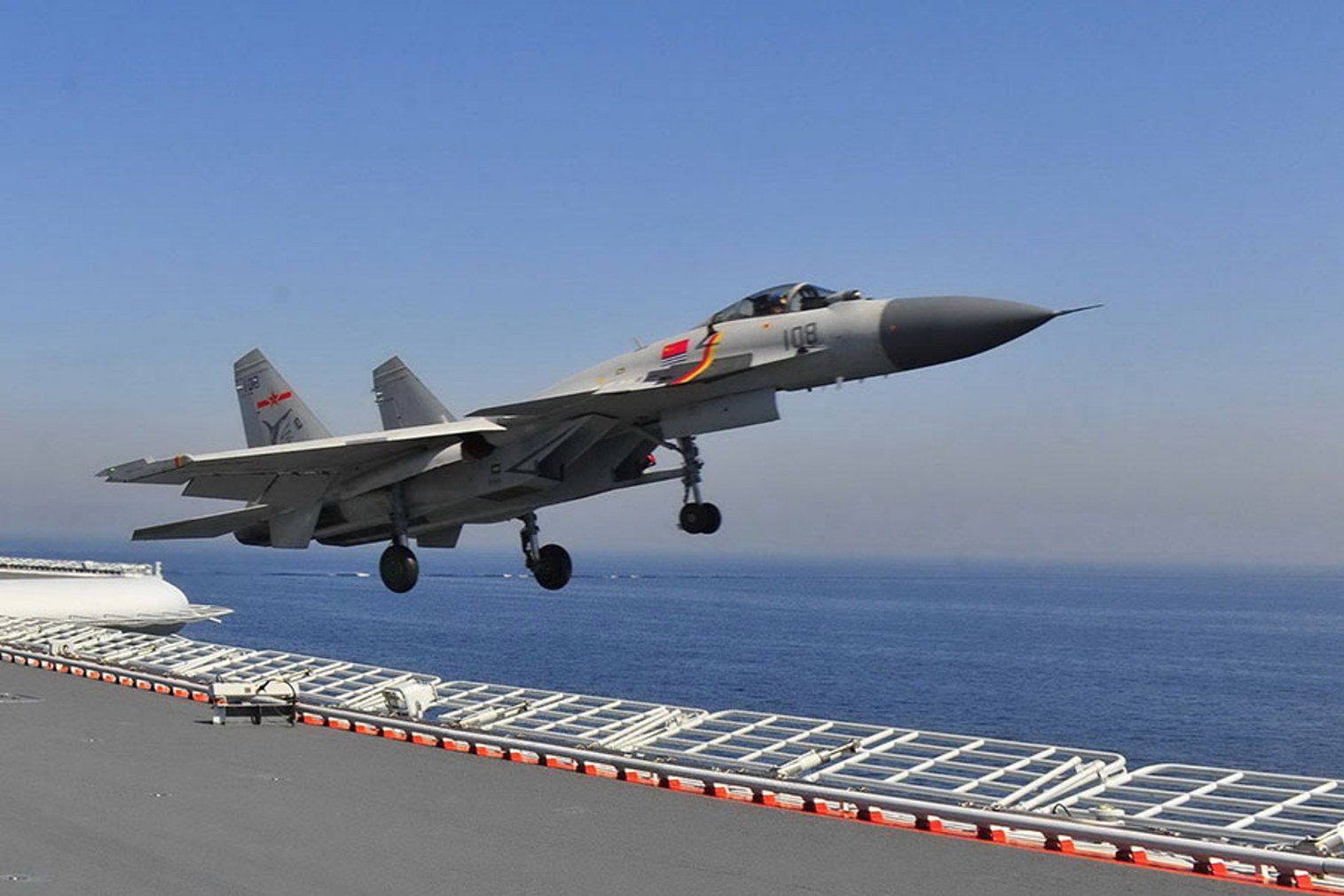
While the J-15 appears to be structurally based on the prototype of the Su-33, the indigenous fighter features Chinese technologies as well as avionics from the J-11B program.
In February 2018, several Chinese media outlets discussed replacing the aircraft, stating that it belongs to the 4th or 4.5th generation fighters. Thus, the J-15 is viewed as an interim carrier-based fighter until a 5th-generation successor enters service, one that may be based on the J-20 or J-31 (now J-35).
China’s J-15 serves as its primary carrier-based aircraft, and if China had gotten its way, it would have been produced originally by simply purchasing the production line for the Su-33 (Russia’s carrier-capable version of the Su-27).
When the Soviets refused to share their Su-33 design secrets, China reverse-engineered them with the help of Ukraine. The result was a carrier-based fighter that shares the Su-33’s folding wing design and overall appearance, coupled with a few Chinese improvements, like incorporating more composite materials to reduce overall weight.
The J-15 made its first flight on 31 August 2009 and was introduced in PLAN service in 2013. It was originally a single-seat variant, but the J-15S two-seat variant first flew in 2012.
The latest J-15D has EW pods and other electronic equipment installed, and the IRST sensor has been removed. It has been under operational testing since late 2018.
The J-15 is severely hindered by its launch apparatus. China’s Liaoning carrier’s inferior catapult and ramp system to launch fighters severely limits the J-15’s maximum operational weight, reducing the total ordnance it can take into battle.
JF 17 “Thunder” (Copy Of MiG-21 & F-16)
China’s J-7 was essentially a MiG 21 platform. After access to F-16 design specs through Israel’s “Lavi” program, China mixed the two technologies to create an aircraft that some contend is greater than the sum of its parts.
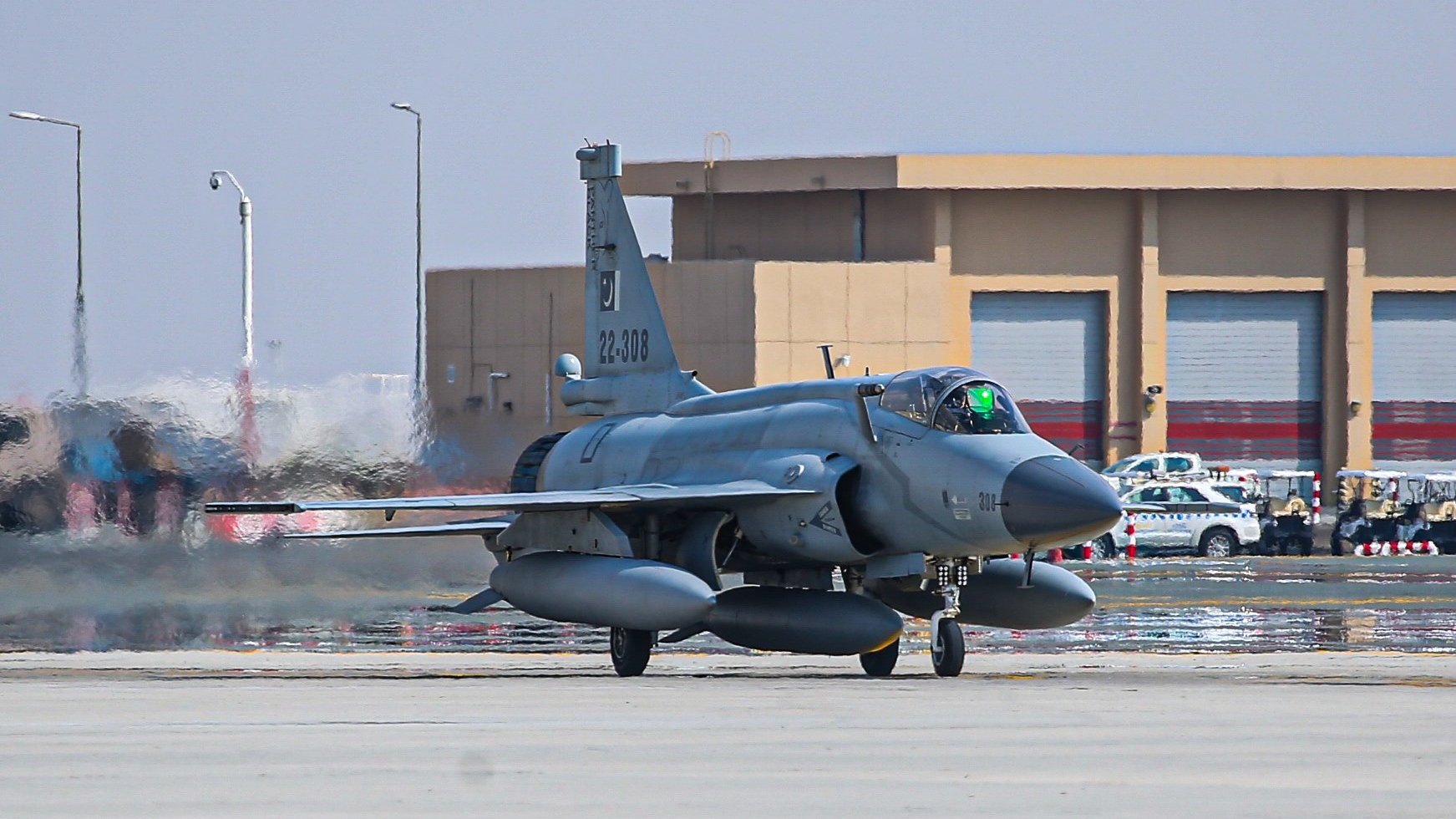
Elements of both aircraft can be seen in the FC-1 (JF-17 in Pakistan), with the F-16’s nose and tail joined by a distinctly MiG-21 wing design. The latest variant of the JF-17 now includes AESA radar, air-to-air refueling capabilities, greater use of composite materials, fly-by-wire technology, and the latest Chinese AAMs.
Also built in Pakistan, the other customers include Myanmar and Nigeria.
Chengdu J-20 (Copy Of F-22 Raptor)
The J-20 is designed as an air superiority fighter with precision strike capability. It made its maiden flight on 11 January 2011 and was officially revealed at the 2016 Chinese Air Show.
The aircraft was introduced into service in March 2017 and began its combat training phase in September 2017. The first J-20 combat unit was formed in February 2018. The J-20 is the world’s third operational fifth-generation stealth fighter aircraft after the F-22 and F-35.
The J-20 is China’s first fifth-generation fighter. The Lockheed Martin F-22 design was stolen by a Chinese national named Su Bin, who was sentenced to 46 months in federal prison for his crime.
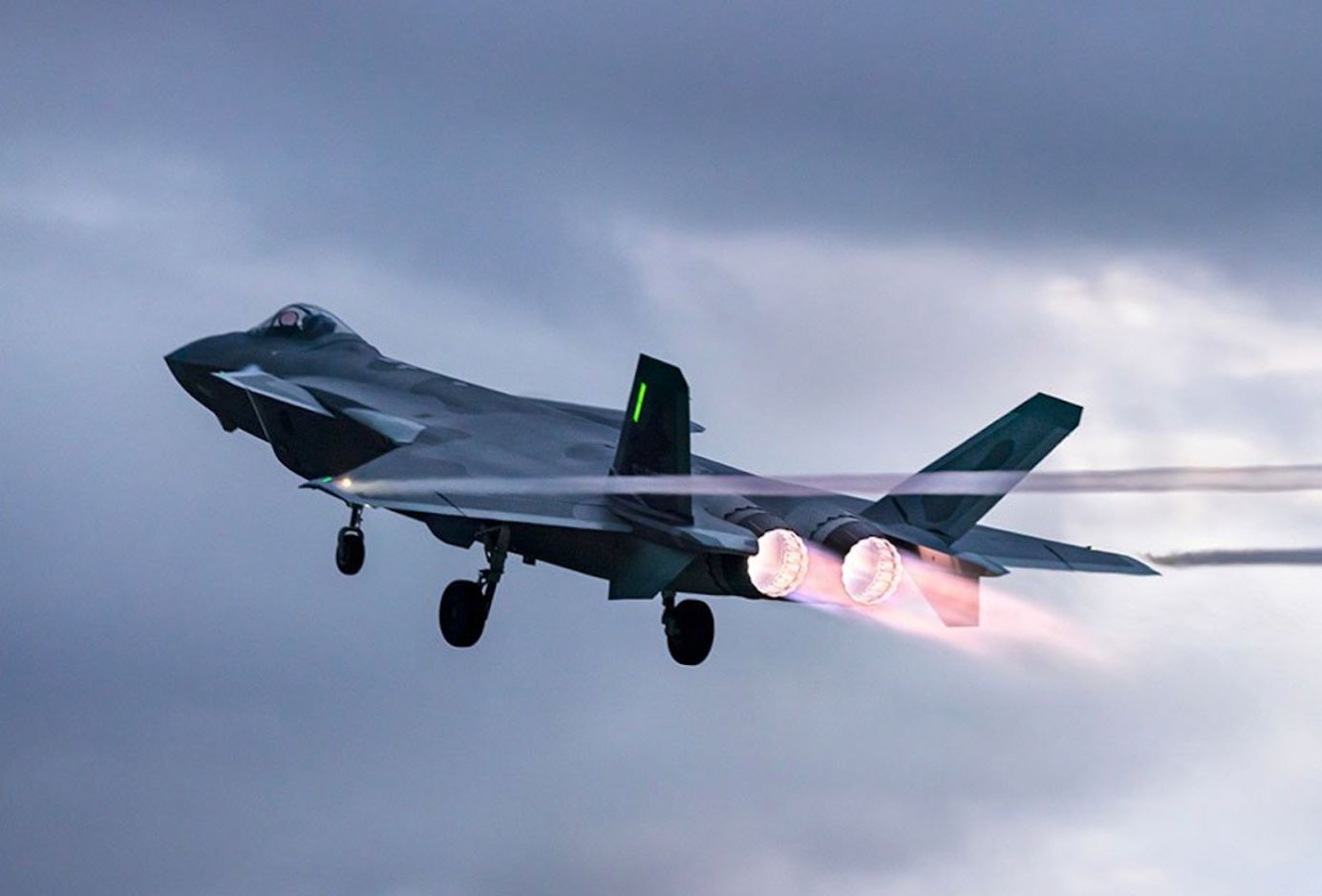
Aside from the obvious addition of forward canards on the J-20, the two aircraft look nearly identical. However, China lacks an extensive background in stealth technology, and it’s widely believed that the J-20’s stealthy design is limited by its inferior radar-absorbent coating, production materials, and even tell-tale canards.
American defense experts have said that China’s J-20 will have a far larger radar signature than the F-22. The U.S. discontinued the F-22 program in 2011, with around 180 built. China, on the other hand, has built 300 and will continue to produce J-20s in large quantities for years to come.
Shenyang J-31 / J-35 (Copy Of F-35 Lightning II)
The Shenyang FC-31 is a twin-engine, mid-size, Chinese fifth-generation fighter currently under development. A photo of a model labeled F-60 was posted on the Internet in September 2011. Pictures of a possibly fully assembled aircraft parking on an airfield emerged on 15 or 16 September 2012. The F-60 is reported to be the export version, whereas the J-31 would be the domestic Chinese version of the same fighter.
On 31 October 2012, prototype No. 31001 conducted its maiden flight. China became the second nation to have two stealth fighter designs in field testing at the same time.
The aircraft has continued a limited test program. From mixed reports from China, it appears that the J-31 will have two variants. One would be a carrier-based fighter, while the other could be a land version for exports.
Officials from AVIC say that the aircraft was intended for export as a competitor to the F-35. An improved prototype, with modifications to the vertical stabilizers, wings, and airframe, an electro-optical targeting system, a larger payload, improvements in stealth, and upgraded electronics, made its maiden flight in December 2016. In November 2018, media reports indicated that the FC-31 program had received government funding and is being sought after by both the PLANAF and PLAAF.
Like the F-22, Lockheed Martin’s F-35 Joint Strike Fighter was also reportedly compromised by Su Bin, leading to China’s J-31 program. This jet, still under development, possesses a greater operational range and larger payload capacity than the F-35 it was based on.
Once it reaches full production, the J-31 will become China’s primary carrier-based fighter, replacing the PLAN’s troubled J-15 once it enters service. Like the J-20 program, the J-31 is limited by China’s inexperience with stealth aircraft.
Externally, the J-31 seems to borrow heavily from both the F-35 and F-22 programs. Pakistan has shown interest in acquiring the J-35.
To Summarize
Sun Tzu, the Chinese general, military strategist, writer, and philosopher, wrote around 500 B.C. “Be extremely subtle, even to the point of formlessness. Be extremely mysterious, even to the point of soundlessness. Thereby, you can be the director of the opponent’s fate.”
He also wrote, “Of all those in the army close to the commander, none is more intimate than the secret agent; of all rewards none more liberal than those given to secret agents; of all matters none is more confidential than those relating to secret operations.”
Clearly, the Chinese have mastered the art of stealing aircraft designs. They have used the Chinese Diaspora, financial inducements, and cyber-attacks. Many Soviet aircraft and systems designers were induced to move to China with drawings when the Soviet Union collapsed in 1991. China has thrown intellectual property rights to the winds, and the worst has been aircraft design stealing.
- Air Marshal Anil Chopra (Retired) is an Indian Air Force veteran fighter test pilot and is the Ex-Director-General of the Center for Air Power Studies in New Delhi. He has been decorated with both gallantry and distinguished service medals while serving in the IAF for 40 years. He tweets @Chopsyturvey
- Follow EurAsian Times on Google News


